Hairline Lowering Surgery in Metro Manila
Search and Compare the Best Clinics and Doctors at the Lowest Prices for Hairline Lowering Surgery in Metro Manila
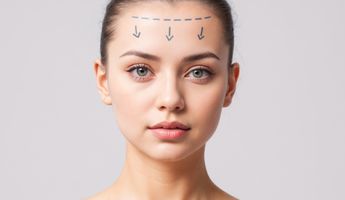
Find the best clinics for Hairline Lowering Surgery in Metro Manila
No pricing info available
Egypt offers the best prices Worldwide
Price: $ 500
From 93 verified reviews
Steve Frost, 20 September 2020
Best hospital in delhi ncr. Good quality of treatment and takes good care of patients.
From 133 verified reviews
Mari Delos Santos, 16 April 2020
The main lobby will give you a feeling of being in a resort or hotel lobby. The newly open Central Park will be an extra treat, an amenity area that will give patients and visitors the feeling of being at home in their own garden. Doctors here are the best in the country. State of the art facilities and high tech medical equipment. How I wish every Filipino can experience the medical care and assistance at Thé Medical City.❤️ March 4, 2020, I went to the Ambulatory Service Center- as usual long line but patients are comfortably seated and patiently waiting. I have been on food and water fasting for my blood extraction. Not to over fast I approached the lady at the counter 4, to let her know of my situation. She was so quick in attending to my concern and never ask for anything, not even my ID or HMO. She accompanied me at the blood extraction area and everything I need was well taken cared of because of her. Thank you very much Ms. Maria Concepcion Calayan Golla for your kind assistance and compassion. Keep up the excellent work. May your tribe increase. All the best!❤️
- Home
- Philippines
- Metro Manila
Compare Before & After Photos of _procedure_photos.phpHairline Lowering Surgery
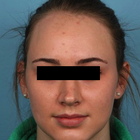
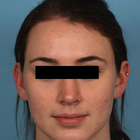
Front view
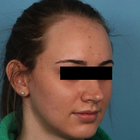
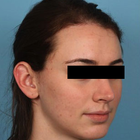
Half-side view

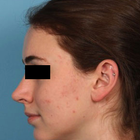
Full-side view

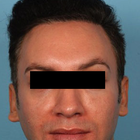
Front view
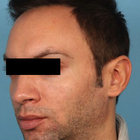
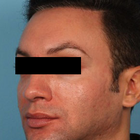
Half-side view


Full-side view


Front view
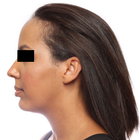

Full-side view
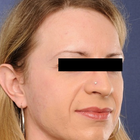
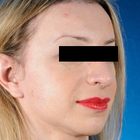
Half-side view
WHY US?
At Medijump, we're making medical easy. You can search, compare, discuss, and book your medical all in one place. We open the door to the best medical providers worldwide, saving you time and energy along the way, and it's all for FREE, no hidden fees, and no price markups guaranteed. So what are you waiting for?

Free

Best Price

Widest Selection

Risk-Free
What you need to know about Hairline Lowering Surgery in Metro Manila
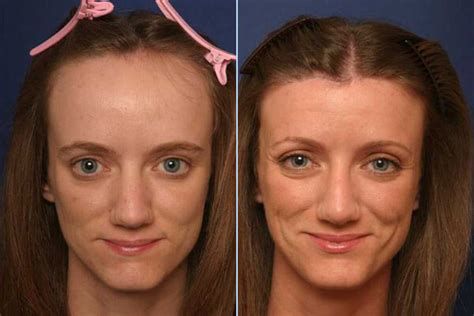
Also known as Forehead Reduction, Forehead Contouring or Scalp Advancement, Hairline Lowering Surgery allows patients to lower their frontal hairline, often lowering it by up to 2 inches. This procedure aims to reduce the distance between the hairline and the eyebrows, creating a more proportionate appearance. It is most commonly done on women with high hairlines, often the result of hair loss.
The procedure usually takes a couple of hours and is performed under general anesthetic. The new hairline is marked on the forehead, the surgeon will cut away this excess skin and the scalp is lowered to the new hairline. Incisions are strategically placed to minimize the visibility of the scar, making it virtually undetectable as it's covered by hair. It's common to combine hair lowering surgery with Facial Feminization Surgery (FFS). Contact a reputable clinic to ensure the best possible results.
What is the cost of Hairline Lowering Surgery in Metro Manila?
Before choosing a procedure, it is essential to understand the cost of a Hairline Lowering Surgery in Metro Manila. The cost might vary depending on a number of factors, including the complexity of the procedure, the surgeon's experience and reputation, and the facility. This approximate cost mostly covers the surgeon's fees, anaesthesia, required medical exams, and hospital or operation centre expenses. This is only a broad estimate, so when accounting for other charges, the exact prices might be higher. The ultimate cost may increase as a result of some factors, including consultation fees, outlays for post-operative care such medications, bandages, and follow-up consultations, as well as potential further surgeries to control complications or enhance outcomes.
It's important to keep in mind that Hairline Lowering Surgery is frequently regarded as a cosmetic surgery and may not be covered by conventional health insurance plans. It is best for the patient to speak with their insurance company before the procedure to understand the specific out-of-pocket costs they would have to pay. Some cosmetic surgery practises may provide financing options or payment plans to help patients manage the cost of the procedure.
What does a Hairline Lowering Surgery Procedure Involve?
Hairline lowering suregry is performed under local or general anesthesia. Before the operation begins, the surgeon draws an anticipated post-operative hairline. The surgery is performed according to this and an incision is made along the hairline. The excessive scalp is cut and removed and the rest is stretched to the new hairline. If this is not enough, tissue expanders are used to make it to the new hairline level. Sutures are used to fix the scalp to the bone and incisions are stitched with bandages being applied over the top.
The medical professional ensures that the incision marks are seamlessly concealed within the hairline, thereby reducing any visible traces of the procedure. Once the operation is concluded, the cut is stitched, and a gentle dressing is applied to shield the wound and diminish inflammation. It's important to understand that the intervention may lead to temporary loss of sensation or minor prickling around the area of incision, however, these symptoms tend to dissipate within several months.
How Long Should I Stay in Metro Manila for a Hairline Lowering Surgery Procedure?
Hairline lowering surgery is an outpatient procedure that takes around 1.5 to 2 hours to complete. After the effects of the sedation subside, you are allowed to leave. Still, you should aim to stay in Metro Manila for at least 6 days post-op. During this period, you will have a follow-up with the surgeon to check everything is healing as expected and the sutures are removed, usually after 5 to 6 days - this is when you're given the all-clear to travel home.
What's the Recovery Time for Hairline Lowering Surgery Procedures in Metro Manila?
It will take between 3 to 6 months to allow the regrowth of hair through the scar, which is important as it hides the scar. Recovery time varies from person to person and some people can get back to their normal routine even after 3 days. At least a week is usually required to get back to normal activities and you may find some swelling and bruising over your forehead in the early days. Pain is managed with painkillers and all symptoms subside after a couple of days. A numbing of the forehead is common and normal feeling usually returns after 3 to 5 days.
What sort of Aftercare is Required for Hairline Lowering Surgery Procedures in Metro Manila?
Aftercare following a Hairline Lowering Surgery is crucial to ensure a smooth recovery and minimization of potential complications. The following are some useful aftercare tips:
- Use icepacks in the initial days to help with inflammation and bruising. Ice is effective in reducing swelling immediately.
- Do not take anti-inflammatory medicines as they increase bleeding tendency.
- Continue taking painkillers prescribed by your doctor.
- Try not to look upwards and avoid frowning as this can be damaging to your stitches.
- Do not lift heavy objects.
- Keep your head a little higher whilst resting.
- Ensure that tight bandages have been applied over the wounds and replace regularly with fresh ones.
- Do not take a bath when the bandages are still intact as a wet bandage can be the cause of infection.
- Avoid strenuous activities such as the gym, running, swimming, etc. for at least 2 weeks after the surgery.
- Do not put hair bands or any other accessory on your head for some time.
- Do not drink or smoke as it will hinder the healing process.
- Ensure you have a diet rich in vitamin C as it makes the healing process faster.
What's the Success Rate of Hairline Lowering Surgery Procedures?
A Hairline Lowering Surgery frequently yields remarkable results, with a significant number of individuals expressing contentment with their post-procedure appearance. Nevertheless, outcomes may differ based on the medical institution or medical professional involved. With the possibility of the scar being visible with certain hairstyles, Hair Transplantation could be applied to further reduce the appearance of any scarring.
Notably, while Hairline Lowering Surgery tends to yield positive results for the majority, it might vary on an individual basis. Factors such as your unique hair growth pattern, scalp flexibility, and the overall state of your hair condition could all influence your final outcome. Therefore, maintaining ongoing communication with your medical professional and adhering to their recommendations both pre and post-treatment is crucial to optimising your results.
Are there Alternatives to Hairline Lowering Surgery Procedures in Metro Manila?
Surgery is not the only option. Consider these methods before opting for surgical treatment:
- Grafting hair (Hair Transplant): with this technique more hairs are grafted along your hairline instead of lowering it. This is also used for the thickening of your hair. A new layer of hair is grafted below your natural hairline. 1200 to 2400 hair strands are grafted. These hairs fall out after 3 weeks then regrow in 4 months. 10 months is required before you'll see the true longterm result. This is a non-surgical alternative to hairline lowering surgery and it is found to be very effective in reducing the size of your forehead.
- Hairstyling: You can hide a big forehead by styling your hair in such a manner. Of course, this is a non-surgical method. Choose those hairstyles which cover your forehead the most. Some people will use headscarves and hats to also hide their forehead.
What Should You Expect Before and After the Procedure?
A fundamental phase before proceeding with a Hairline Lowering Surgery in Metro Manila is the preliminary discussion with your medical expert. This interaction involves a comprehensive health evaluation, scrutiny of your medical background, and discussion of any medications you currently use by your expert. They will also perform an exhaustive examination of your scalp and hairline. This evaluation offers the medical professional an opportunity to decide if you're the perfect fit for the process. Moreover, they will deliberate on your anticipation and cosmetic objectives, ensuring they align with the realistic outcomes offered by Hairline Lowering Surgery.
Feeling slight discomfort, swelling, and bruising in the treated part is a normal sensation post a Hairline Lowering Surgery. It is vital to abide by the directives of your medical professional, which may involve keeping your cranium elevated and avoiding rigorous activities to manage these symptoms. For the initial few days succeeding the procedure, rest is essential, providing your body with time to recuperate. Your medical expert might recommend pain-relief therapy for discomfort management. Usually, stitches are taken out approximately one week after the surgery, and by this time, most people can get back to their work and routine activities. Regular follow-up sessions with your medical expert should be expected during the recovery span. These sessions offer your expert a chance to track your recovery progress, manage any prospective obstacles, and provide support during your healing period.
What are the Risks and Side Effects of Hairline Lowering Surgery in Metro Manila?
While side effects are usually minimal, they are important to think about. After the Hairline Lowering Surgery, you might feel some short-term side effects like swelling, pain, and bruising around the spot where you had the surgery. This is normal during healing and usually goes away in a few days. Numbness or tingling near the cut is also common after a Hairline Lowering Surgery. This happens because small nerves can be affected during the procedure. As your body recovers, these feelings should slowly lessen and finally go away.
Some people might notice hair loss, usually temporary, around the cut. This happens due to the stress on the hair roots during the procedure. However, this kind of hair loss usually doesn't last more than a few months, and new hair will start to grow. More serious risks include infection, heavy bleeding, or bad reactions to the anesthesia. While these problems are rare, they need immediate medical help. To reduce these risks, it's crucial to pick a good surgeon and follow their before and after care instructions.
Whilst the information presented here has been accurately sourced and verified by a medical professional for its accuracy, it is still advised to consult with your doctor before pursuing a medical treatment at one of the listed medical providers
No Time?
Tell us what you're looking for and we'll reachout to the top clinics all at once
Enquire Now

Popular Procedures in Metro Manila
Prices Start From $136

Prices Start From $4

Prices Start From $126

Recommended Medical Centers in Metro Manila for Hairline Lowering Surgery

- Interpreter services
- Translation service
- Religious facilities
- Medical records transfer
- Medical travel insurance
- Health insurance coordination
- TV in the room
- Safe in the room
- Phone in the room
- Private rooms for patients available

- Interpreter services
- Translation service
- Religious facilities
- Medical records transfer
- Medical travel insurance
- Health insurance coordination
- TV in the room
- Safe in the room
- Phone in the room
- Private rooms for patients available

- Interpreter services
- Translation service
- Religious facilities
- Medical records transfer
- Medical travel insurance
- Health insurance coordination
- TV in the room
- Safe in the room
- Phone in the room
- Private rooms for patients available

- Interpreter services
- Translation service
- Religious facilities
- Medical records transfer
- Medical travel insurance
- Health insurance coordination
- TV in the room
- Safe in the room
- Phone in the room
- Private rooms for patients available

- Interpreter services
- Translation service
- Religious facilities
- Medical records transfer
- Medical travel insurance
- Health insurance coordination
- TV in the room
- Safe in the room
- Phone in the room
- Private rooms for patients available

- Interpreter services
- Translation service
- Religious facilities
- Medical records transfer
- Medical travel insurance
- Health insurance coordination
- TV in the room
- Safe in the room
- Phone in the room
- Private rooms for patients available

- Interpreter services
- Translation service
- Religious facilities
- Medical records transfer
- Medical travel insurance
- Health insurance coordination
- TV in the room
- Safe in the room
- Phone in the room
- Private rooms for patients available

- Interpreter services
- Translation service
- Religious facilities
- Medical records transfer
- Medical travel insurance
- Health insurance coordination
- TV in the room
- Safe in the room
- Phone in the room
- Private rooms for patients available

- Interpreter services
- Translation service
- Religious facilities
- Medical records transfer
- Medical travel insurance
- Health insurance coordination
- TV in the room
- Safe in the room
- Phone in the room
- Private rooms for patients available

- Interpreter services
- Translation service
- Religious facilities
- Medical records transfer
- Medical travel insurance
- Health insurance coordination
- TV in the room
- Safe in the room
- Phone in the room
- Private rooms for patients available
Hairline Lowering Surgery in and around Metro Manila
About Manila
Manila is the capital of the Philippines and is divided into 16 districts; it is one of the densest and populated cities of the world. Each district has its own history and cultural legacy. The city was under the rule of Spanish conquerors for almost three centuries. You can see the remains of that era in the ruins of the historical buildings. Today, the City is very modern with tall skyscrapers and modern architecture.
The Philippines is developing into one of the top countries in the world for medical tourism. Approximately 15 million people globally travel to other countries in search of quality medical care at affordable prices. Manila is a favorite destination due to the following reasons:
- It provides state-of-the-art procedures at affordable prices.
- With excellent infrastructure, the City can handle the large numbers of foreigners who visit Manila.
- The Hospital and clinic staff are very competent, friendly, and educated and have a good knowledge of English to communicate with their patients.
- The doctors are very well-qualified and hold international certifications.
- The city has a reputation in providing excellent post-surgical care by the nurses and physiotherapists.
- The Medical Industry provides many alternative therapies at some of the best spa resorts. You can combine a surgical procedure with alternative healing therapies at the same time.
Popular Areas in Manila
Manila Bay has many tourist spots and you will find many monuments that depict the Spanish occupation of the country. There are many Baroque Colonial Churches that will enable you to appreciate the artistic designs.
The National Museum of the Philippines, Bahay Chinoy, the National Art Gallery, and the Metropolitan Museum of Manila are some of the popular museums that you must visit in Manila. Rizal Park also known as Luneta is a historical urban park that is worth visiting.
There are also many organized tours that can help you get the best out of your sightseeing, for example, the Intramuros Tour, Rizal Park Tour, or the Skyscraper Gazing Tour and more.
Manila is a very modern contemporary city as the historical buildings have been replaced by modern architecture with better planning and layout and the buildings are earthquake resistant.
The city has many cultural and religious festivals throughout the year. There are plenty of shops, both big and small where you can buy branded goods at affordable prices.
Weather and Climate in Manila
The Philippines is a tropical country and in Manila, you will not experience too much temperature variations. January is the coolest month while May is the warmest month. The average temperature remains between 14°C and 38°C. The rainy season is between May and November. The rest of the months are dry. Manila is a humid city and bad weather such as Typhoons may occur during the months of June and September.
Getting around in Manila
People traveling from nearby countries such as Malaysia and Indonesia can use the City’s sea entry points. For all other passengers, the best option is to take the air route.
The Ninoy Aquino International Airport is the City’s major international airport. It has four different terminals that connect via bus transfers. If you are taking a connecting flight, remember to keep some time as a buffer, as transfers may force you to travel through the busy streets of Manila. Terminal 1 caters to International flights and Philippine Airlines uses T2 and domestic carriers and international carriers use T3 with budget carriers largely using T4.
You can take a bus from the airport to the city. Taxis have meters and you can hail a cab outside the airport. Buses and small vans or jeepneys are popular modes of transport within the city.
Manila has three light rail systems and one heavy train line. The light rail systems are the LRT-1, LRT-2, and MRT-3. You can also use the pedicabs and tricycles for shorter distances. In some areas, you can even find horse-driven carriages called calesa.
Tourist Visas in Manila
The visa process is not a very complex system as the Philippines has a visa waiver program for certain countries. All European nations, South American countries, and many others form part of this program. Citizens from these countries can stay in Manila for up to 30 days, whereas nationals from Brazil and Israel may stay in Manila for 59 days. Hong Kong, Macau, and Portugal residents can stay for 14 days without a visa. Tourists belonging to other countries need to apply for a visa to enter the Philippines, in the consulate in their respective countries.
You must also have a valid return ticket. Passport must also be valid for at least six months and beyond to stay in the country. Visa-exempt people may extend their stay by one or two months after which they will have to apply for a visa.
Additional Information
- The currency of the Philippines is Peso (symbol: ₱). It is strong in the world market and the usual exchange rate is 1 Dollar equals 50 Pesos. Dollars are easy to exchange compared to other currencies.
- Credit cards are acceptable in almost every place. The city also has many ATMs from where you can withdraw money without difficulty. However, ATMs will charge you a minimal exchange fee on foreign cards.
- Bargaining and negotiating are acceptable in most places and it can get you better deals.
- Restaurants may add a service charge of up to 10%. You can pay a cash tip of 5 to 10 %. People often round off the taxi fare.
- Manila is a city full of people who speak English proficiently. Filipino and English are the two official languages. Filipino is a variety of Tagalog, Austronesian languages.
- Hindu, Muslim, Buddhism, and Christian religions have left their mark on the Philippines at different periods. Today, a majority of the population is Roman Catholic.
- There are many public holidays in Manila. Some of the important ones are Christmas Eve, Christmas, Eid al-Fitr (Ramadan), Labor Day, New Year, and Good Friday, etc. The Independence Day falls on June 12th and Manila Day on 24th June.
Popular Searches
- Plastic Surgery in Thailand
- Dental Implants in Thailand
- Hair Transplant in Thailand
- Breast Augmentation Thailand
- Gastric Sleeve in Thailand
- Gender Reassignment Surgery in Thailand
- Laser Hair Removal in Bangkok
- Botox in Bangkok
- Dermatology in Bangkok
- Breast Augmentation in Bangkok
- Coolsculpting in Bangkok
- Veneers in Turkey
- Hair Transplant in Turkey
- Rhinoplasty in Turkey
- Stem Cell Therapy in Mexico
- Rhinoplasty in Mexico
- Liposuction in Mexico
- Coolsculpting in Tijuana
- Rhinoplasty in Korea
- Scar Removal in Korea
- Gastric Sleeve in Turkey
- Bone Marrow Transplant in India
- Invisalign in Malaysia
- Plastic Surgery in the Dominican Republic
- Tummy Tuck in the Dominican Republic
- Plastic and Cosmetic Surgery in Poland
- Rhinoplasty in Poland
- Hair Implant in Poland
- Dental Implants in Poland
- IVF in Turkey

